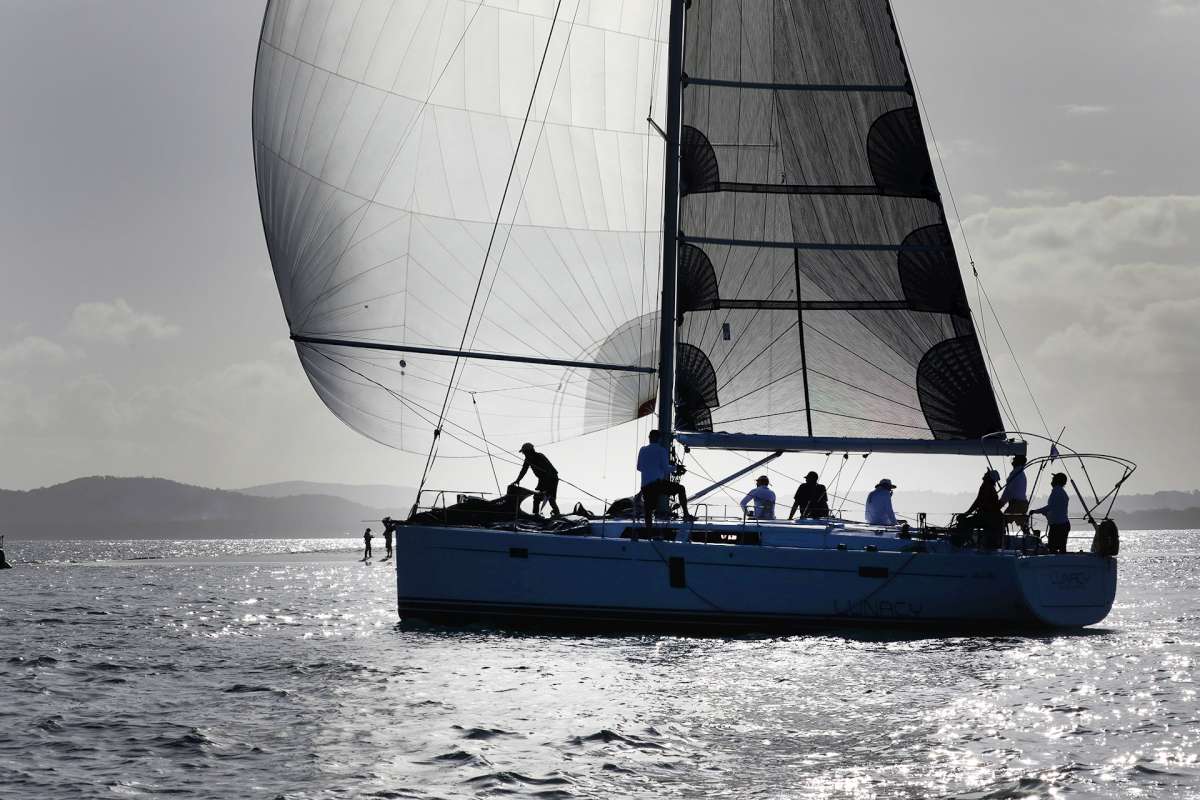David Dellenbaugh is an America's Cup winning tactician and multiple world champion in different classes. His column Speed and Smarts appears in every issue of Australian Sailing + Yachting.
Tip 1
Don't use your instruments to evaluate speed. David says that even instruments which measure to hundredths of a knot can't measure the small differences between boats sailing to maximise VMG upwind or downwind.
Tip 2
Keep good records. If you want to improve your race results for the long run (as opposed to flashes of speed here and there) making notes is the only answer. Keep a record of your tuning set-up and sail trim settings and highlight the ones you were using when you had more speed than the opposition.
Tip 3
Always use weight to help turn. Using your rudder to turn creates drag, so instead heel to starboard to turn to port and heel to port to turn to starboard.
Tip 4
Always use sail trim for turning. As well as altering weight, alter the sails. Over-trim the main to head up during a turn, over-ease the main to bear off.
Tip 5
Minimise rudder movement to keep the boat going fast. Many helmsmen have a habit of over-steering which is slow. The best helmsmen keep the tiller or wheel very still.
Tip 6
Set up properly for an accurate two-boat test. If the leeward boat is too far astern or too far in front, you won't get accurate information. Set up two to three boat lengths apart, with the leeward boat slightly ahead. (See diagram.)
Tip 7
Identify the speed and height combination that applies between you and another boat. If you have a crew member reporting how you are going against a rival, it is not enough to know whether you are faster/slower or higher/lower. David publishes a table showing which combinations are good and which are bad. For example “higher and same speed” is a plus while “higher and slower” or “lower and faster” raise questions.
Tip 8
In puffy wind, set up for the lulls. It's impossible to adjust every control every time the wind lifts or drops so set up for the lighter stuff. You can live with being overpowered for short periods but if you are underpowered in the very light airs you will stop.
Tip 9
Focus on the angle of heel. Most boats sail best when they're flat, so look at the relationship between your headstay and the horizon. It's important to know whether the boat is about to heel more or less and you can gauge that by feeling the pressure of the hull as it pushes up against your body or drops away from you.
Owing to contractual obligations, we are not allowed to run David Dellenbaugh's columns in full on the website. To read the entire article and to see the excellent diagrams David uses to illustrate these key points, buy a copy of the July/August issue of the magazine at your local newsagents or buy a copy for your iPad by clicking here https://itunes.apple.com/au/app/australian-sailing-+-yachting/id561365591?mt=8.
Of course the best way to ensure you read David's words of wisdom every month, along with advice from world champion and Olympic gold medal coach Michael Blackburn and others is to subscribe and have the magazine home delivered six times a year. Go to http://greatmagazines.com.au/offers.php?PubCode=ASL for this month's special offer.

























